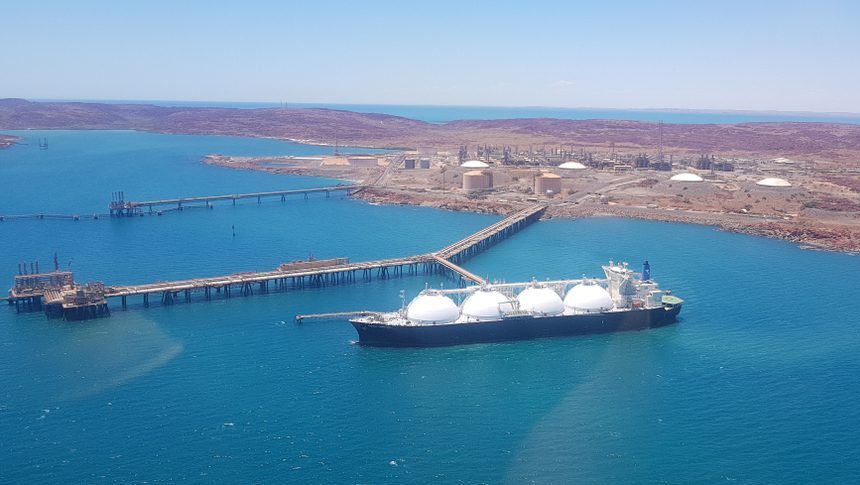No products in the cart.

Gas ship being filled up at Pilbara, Western Australia.
The European Commission’s winter plans for maintaining a stable gas flow into Europe could be upended by industrial unrest in Australia as workers in strategically important gas facilities prepare to ballot for strike action later this week.
European gas futures rose 40% amid growing concerns of a walkout at multiple gas drilling and processing facilities across Western Australia primarily owned by the Chevron Corporation in a dispute over pay and conditions.
European gas prices jump as Australian unions ratchet-up threat to strike at LNG export plants
— Stephen Stapczynski (@SStapczynski) August 21, 2023Futures rose 18% at open
Europe has been sensitive to supply risks since losing Russian gas
Still not clear if Australian LNG will be disruptedhttps://t.co/s87ZjwsURH pic.twitter.com/AoBDERVycK
The world’s largest exporter of liquid natural gas (LNG), Australia has stepped in to fill the gap left by sanctioned Russian imports over the past 18 months as European member states prepare their storage for the winter months ahead.
According to Australian union representatives, industrial action could begin as early as September 2nd. More than 10% of global LNG exports are currently passing through the affected facilities. Sources have told Reuters that the most likely scenario is a short-term strike with neither unions, workers, nor managers preferring a drawn-out dispute.
Unions cite a lack of job security and poor pay as their primary grievances. Workers are holding a vote later this week to decide on whether to walk off the job after giving the legally required seven-day notice.
While Europe receives very little Australian gas directly, it is expected that any strike action could put the EU on a collision course with China and other East Asian markets increasingly dependent on Australian gas exports.
The race is on and
— Francesco Sassi (@Frank_Stones) August 21, 2023EU is starting to get what it feels like being in a global gas market.
Australia's labour unions said workers had “unanimously endorsed” a strike action. Claims should be resolved by the close of business on Wednesday. Get ready
TTF is spiking again pic.twitter.com/7Wj6EO1T2r
“If Australian LNG supplies are missing this year, you can bet that China will fight against Europe for US or Qatari gas supplies, especially as China has very few gas storage facilities,” says Thierry Bros, a professor at Paris’ Sciences Po University.
Europe earned a temporary respite last year because of Chinese COVID restrictions which artificially lowered international gas prices as the EU grappled with energy sanctions against Russia as well as the mysterious destruction of the Nord Stream 2 gas pipeline between Germany and Russia.
Qatari and American LNG imports into Europe have largely replaced Russian supplies since the outbreak of the war in Ukraine but any chaos in Australia would force China to eat into global gas supplies.
Despite the looming strike action, EU officials have been boastful the past week following the announcement that European gas storage facilities have reached 90% capacity amid expectations of a winter of volatile gas prices. This is, however, just about enough to meet only a third of winter demand. European decision-makers and member states will continue to grapple for alternative supply routes and energy efficiencies to stave off potential disaster.
The question of how to secure Europe’s gas supply has informed multiple geopolitical decisions recently, including the EU’s soft stance on the ongoing persecution of ethnic Armenians in Nagorno-Karabakh due to the need to keep Azeri gas flowing.
Energy analysts speaking to the American business site CNBC believe that this week’s gas price spike could just be the starting gun ahead of potential months of energy turbulence as Europe prepares for another winter without peace in Ukraine.